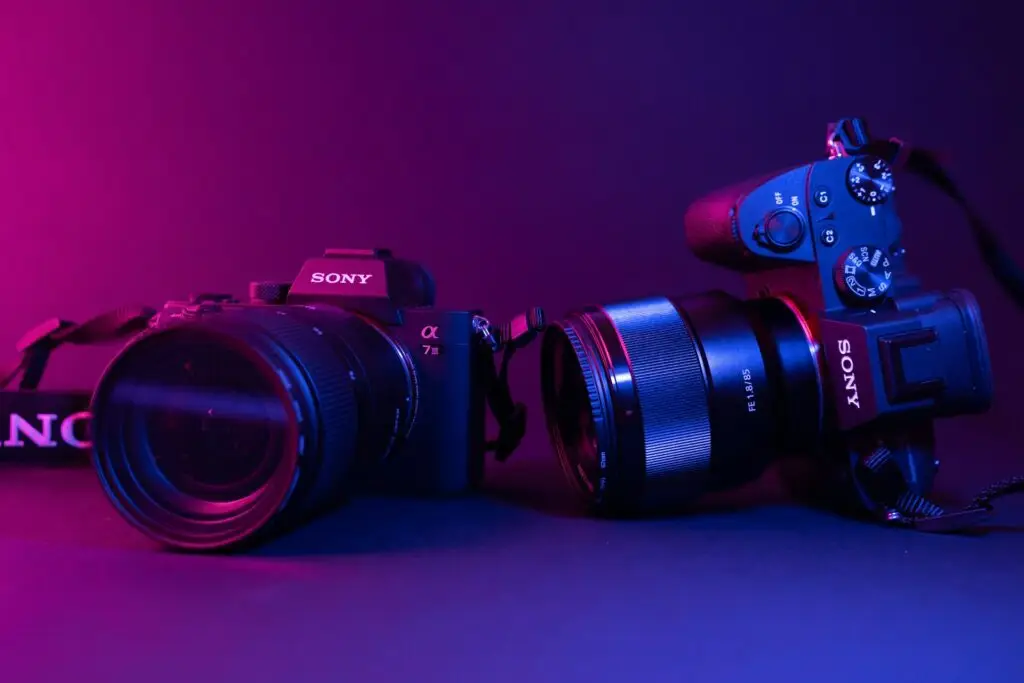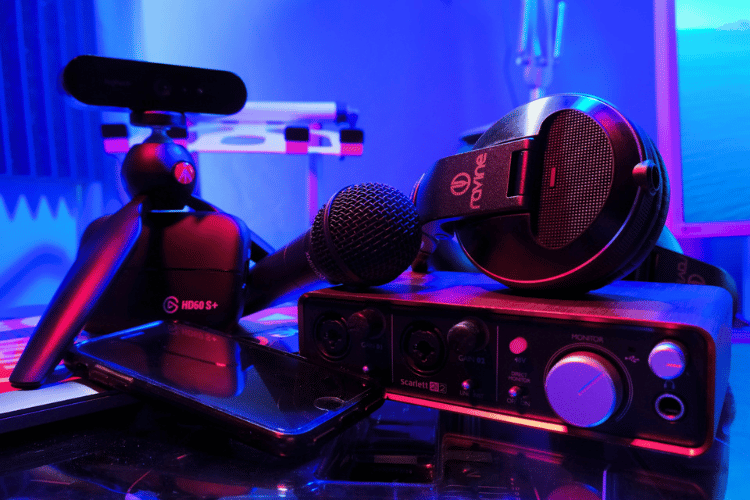
Top 6 Best Cameras for YouTube Video Making in 2025
Disclosure: We may earn a commission from purchases made through links in this post, but we only share products and brands we genuinely love and trust.
Struggling to find the perfect camera for your YouTube channel? Your struggle makes sense considering the countless options flooding the market nowadays.
Fortunately, we have an impressive lineup of creator-focused cameras today. They combine excellent video capabilities, user-friendly interfaces, and features specifically designed with you in mind.
1. Panasonic LUMIX GH7

Overview
The Panasonic LUMIX GH7 is our first choice for its hybrid photo-video capabilities. It’s most suitable for serious content creators out there. The GH7 delivers cinema-grade video features previously reserved for professional equipment at a fraction of the size and cost.
With features such as ProRes RAW recording, 4k/120p slow-motion capabilities, and a 25.2MP BSI CMOS sensor, the GH7 is perfect for YouTube creators looking for exceptional video quality without sacrificing usability.
Pros
- Professional-grade video options: Internal ProRes RAW recording allows you to adjust exposure and white balance even after filming.
- Advanced audio integration: Optional 32-bit float audio capture eliminates concerns about audio levels.
- Versatile shooting configurations: The tilting/fully-articulating rear screen and “open gate” recording options make it ideal for self-filming and creative framing.
Cons
- While incredibly powerful, newer creators might feel overwhelmed by the advanced features.
- Sustainably larger than pocket vlogging options, despite being compact for its capabilities.
2. Sony Alpha 6700
Overview
Similar to the Panasonic GH7, the Sony Alpha 6700 is a great compact camera for YouTube creators who need professional video quality.
It has a 26MP BSI CMOS APS-C sensor and a full-articulated LCD screen. These features are made for vloggers who value both image quality and ease of use.
This mirrorless camera offers incredible 4K video at up to 60fps from its full sensor width. That’s an excellent frame rate if you ask us. You also get 10-bit video with 4:2:2 color depth for amazing dynamic range and flexibility in post-production.
Pros
- Excellent autofocus performance: The 759-point system with subject recognition keeps you perfectly sharp even when moving.
- Creator-friendly design: The fully articulating screen and vlog-friendly Auto Framing mode are perfect for self-shooting.
- Professional color options: S-Cinetone, S-Log3, and uploadable LUTs grant you cinema-quality color flexibility.
Cons
- Intensive 4K recording can drain the battery life faster than you might expect.
- The high-quality All-I recording options require expensive V90 SD cards.
3. Fujifilm X-M5

Overview
The Fujifilm X-M5 is a budget-friendly camera that focuses on video features. It doesn’t have an EVF but makes up for it with excellent image qualityand user-friendly controls.
Plus, the film simulation mode dial makes it an excellent choice for beginners who want creative looks without editing. Despite its small size, it offers complete manual control and a helpful autofocus joystick.
Pros
- Excellent image quality: The proven sensor delivers fantastic footage for YouTube videos.
- Intuitive controls: Complete manual control without complicated menus or shared dials.
- Great value: Professional-level features at a budget-friendly price point.
Cons
- The LCD is functional but not as bright or crips as competitors so it’s a basic screen.
- There’s no electronic viewfinder, which might be a dealbreaker for those who prefer eye-level shooting.
4. Sony Alpha ZV-E10 II

Overview
The Sony ZV-E10 II is a vlogging camera that builds on the success of the original Sony ZV-E10.
It records 4K video at up to 60fps with internal 10-bit capture (a similar frame rate to the Sony Alpha 6700). The updated sensor and processor give you better video quality than the previous model.
The fully articulated touchscreen makes recording yourself super easy. Sony also added useful features like ‘Product Showcase’ mode for product reviewers on YouTube.
Pros
- Excellent video quality: Internal 10-bit 4:2:2 color and Log profiles give you flexibility in editing.
- Vlogger-focused design: The fully articulated screen and dedicated video record button make self-recording simple.
- Strong autofocus: The updated autofocus system keeps you in perfect focus while vlogging.
Cons
- Lacks IBIS for decent body image stabilization. You’ll need lenses with optical stabilization for smooth handheld footage.
- The battery life, while improved from the original, still requires spares for all-day shooting.
5. DJI Pocket 2

Overview
The DJI Pocket 2 is a tiny camera with a built-in 3-axis gimbal for super-smooth footage. It fits in your pocket but still shoots 4K60 video at 100 Mb/s. The 1/1.7″ sensor captures good video even in low light.
This small camera is perfect for travel vloggers and action video creators. The four stabilization modes let you choose how the camera moves based on your shooting style.
Pros
- Amazing body image stabilization: The 3-axis gimbal creates smooth handheld video without extra gear, unlike the Sony ZV-E10 II.
- Good image quality: The 1/1.7″ sensor handles various lighting conditions well for its size.
- Extremely portable: Fits in your pocket while offering 4K60 video recording quality.
Cons
- Small controls as the tiny joystick and buttons, can be fiddly to use.
- The companion app could be more user-friendly and feature-rich.
6. Sony ZV-1
Overview
The Sony ZV-1 is a compact vlogging camera that helps creators upgrade from smartphone videos. It borrows its 1-inch sensor from the premium RX100 series but adds vlogger-friendly features.
Additionally, the camera is lightweight and easy to carry all day. It includes a directional microphone with a windscreen to reduce ambient noise. There’s a built-in mic jack if you’d rather use an external microphone instead.
The built-in 24-70mm f/1.8-2.8 Zeiss lens complements different shooting styles too.
Pros
- Perfect vlogging size: Similar to the Pocket 2, the compact, lightweight design is comfortable for extended handheld shooting.
- Built-in directional mic: Reduces background noise and includes a windscreen for outdoor shooting.
- Fully articulated screen: Makes it easy to monitor yourself while recording.
Cons
- Will face overheating issues as the camera can shut down during long 4K recording sessions
- Has limited touch functionality since there’s no touch navigation when the screen is facing you.
Conclusion: Final Thoughts
Choosing the right camera for your YouTube journey in 2025 doesn’t have to be overwhelming. Whether you’re a seasoned filmmaker needing advanced features like ProRes RAW and 10-bit color, or a beginner vlogger looking for portability and ease of use, there’s a perfect match on this list. From the powerhouse Panasonic LUMIX GH7 to the ultra-compact DJI Pocket 2, each camera offers unique strengths tailored to different creator needs. Take your time, weigh your priorities—be it video quality, portability, or budget—and invest in the tool that will best support your content creation goals this year.




